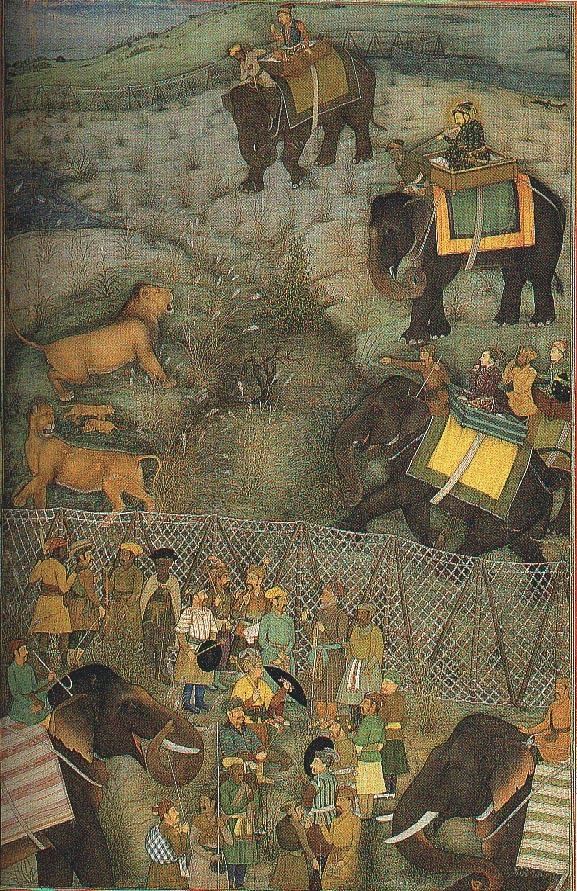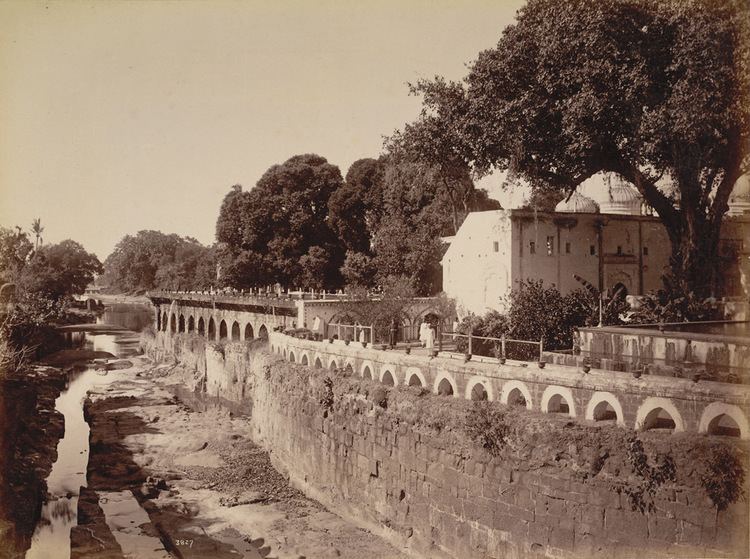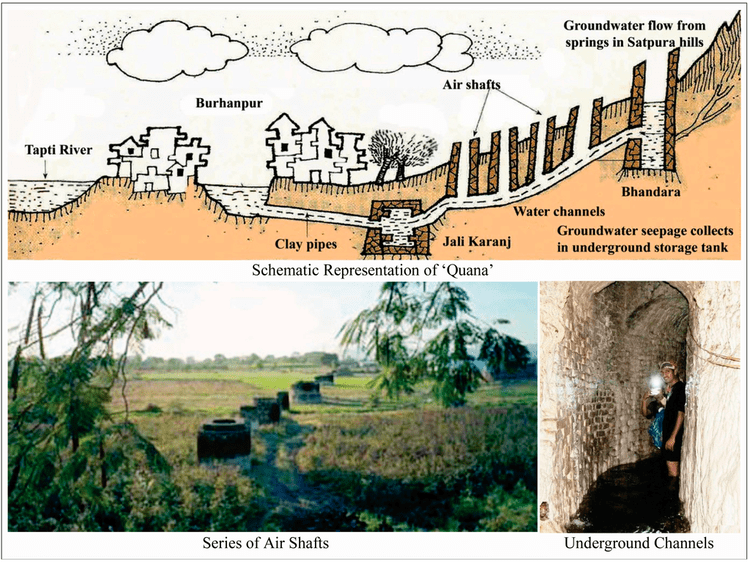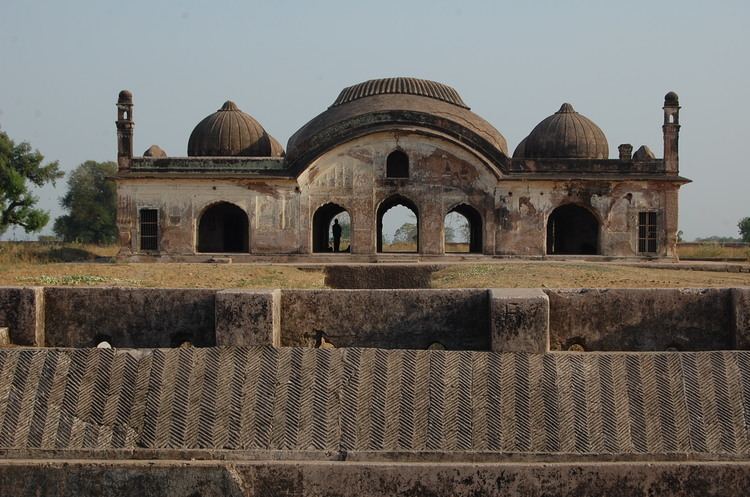Country India Language spoken State Mayor Mrs. Madhuri Patel | Population 193,725 (2001) Area 181.06 km2 Founded 1380 | |
 | ||
Map of Burhanpur
Burhanpur is a mid-size city in Madhya Pradesh state, India. It is the administrative seat of Burhanpur District. It is situated on the north bank of the Tapti River, 340 kilometres (211 mi) southwest of Bhopal and 540 kilometres (336 mi) northeast of Mumbai. The city has a Municipal Corporation, and also is one of the district headquarters of the state of Madhya Pradesh.
Contents
- Map of Burhanpur
- Mujra in burhanpur part 1
- Burhanpur the city famous for cloth mills mumbai cst howrah kolkata mail
- History
- Under the Mughals
- Under the Marathas
- Geography
- Demographics
- Tourism
- Industries
- References

Mujra in burhanpur part 1
Burhanpur the city famous for cloth mills mumbai cst howrah kolkata mail
History

Burhanpur was an important city under Rashtrakuta Dynasty during 753–982. During excavations in Tapti River & Asirgarh Fort many coins, goddess idols and temples discovered which belongs to prehistoric era. But, Burhanpur got its name and fame during medieval time.

In 1388, Malik Nasir Khan, the Faruqi dynasty Sultan of Khandesh discovered Burhanpur, at the behest of Shaikh Zainuddin and renamed it after a well-known medieval sufi saint, Burhan-ud-Din. Burhanpur became the capital of the Khandesh sultanate. Later, Miran Adil Khan II (reigned 1457–1501), another sultan of this dynasty, built a citadel and a number of palaces in Burhanpur. During his long reign, Burhanpur was transformed into a major centre for trade and textile production.
Under the Mughals
In 1601, Mughal emperor Akbar annexed the Khandesh sultanate and Burhanpur became the capital of Khandesh subah, one of three new top-levels provinces of the Mughal empire, added in 1601 (like Berar subah in 1869 and Ahmadnagar subah in 1601-35) to the initial dozen as he conquered much of the Deccan, and renamed Khandesh to Danesh after his son Daniyal. In 1609 Jahangir appointed his second son Parviz to the governorship of the Mughal provinces of the Deccan, and the prince chose Burhanpur as his headquarters and his residence.
It became a beautiful city with a lot of surviving historical monuments existing in its expanse, primarily from the ruling times of Shah Jahan, the great Mughal emperor. Burhanpur was an important outpost of the Mughals. Shah Jahan spent a considerable time in this city, and helped add to the Shahi Qila. The Shahi Qila is one majestic palace in Burhanpur, located to the west of the Tapti River. Diwan-i-Aam and Diwan-i-Khas were built on the terrace of the Qila. Little of it remains today as the Qila is mostly in ruins now. However, the parts of the palace that still stands displays amazing works of sculpture and exquisite carvings. The main attraction at the palace is the hamam or the royal bath. It was specifically built for Shah Jahan's wife, Begum Mumtaz Mahal, so that she could enjoy a luxurious bath. It is said that she died here, giving birth to her fourteenth child. Even today, the ceiling has many intricate paintings. One of these paintings depicts a monument which is said to have been the inspiration for the Taj Mahal.
Under the Marathas
In 1681, Burhanpur was raided by Sambhaji, joined by his general Hambirrao Mohite.
Santaji Ghorpade attacked Burhanpur and Khandesh subha to force Mughal emperor Aurangzeb to deploy more forces in Khandesh. This act by Santaji relieved some pressure of Mughal armies from Karnataka and Maratha swarajya.
The city was taken by Peshwa Bajirao during his reign to Malwa and Delhi by a Maratha army under Sadashivrao Bhau who defeated the Nizam of Hyderabad and took control of the town. In 1761 the Maratha army marched from the city to the Third Battle of Panipat.
At the down fall of Maratha Empire, the city went to Maratha Sardar Holkar, Scindia, and then finally in 1818 was handed over to British by the Marathas.
Geography
Burhanpur is situated on the southwestern border of Madhya Pradesh, near the banks of the Tap(t)i River.
Demographics
As of 2011 India census, Burhanpur has a population of 210891. Males constitute 51% of the population and females 49%. Burhanpur has an average literacy rate of 64%, higher than the national average of 59.5%; with male literacy of 69% and female literacy of 57%. 15% of the population is under 6 years of age.
Tourism
Burhanpur was ruled by several dynasties, and consequently has many visitor attractions of historical interest. It has three rivers, Tapti, Utavali and Mohna, with several natural sights for visitors to Burhanpur. This small town has four small ghats. Being the home of a very diverse population, Burhanpur has a notable Gurudwara, Masjid, Church, a world-famous Dargah and many notable temples including Swami Narayan Temple and Ganesh Temple.
Industries
Burhanpur is best known for textile industries. It is the largest hub for Power Loom industry in the state. Also, having one NTC (National Textile Corporation) project 'Tapti Mills' and Two private owned spinning mill latest state-of-the-art technology. 300-350 textile companies are best known for interlining cloth, Grey Markin, Bleached Dhoti, Cambric, Power loom Cloth bakram and other types of fabric. 'Texmpo Pipes' is the NSE noted industry, Balaji industry both manufactures pipes and agriculture equipment. Several cotton and oil mills are also there.It is the main hub for Textile industry in the INDIA.
Apart from this, it is largest producer of Banana in Madhya pradesh.
